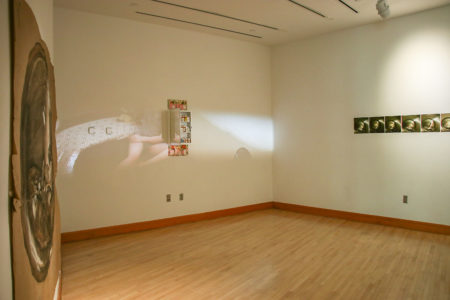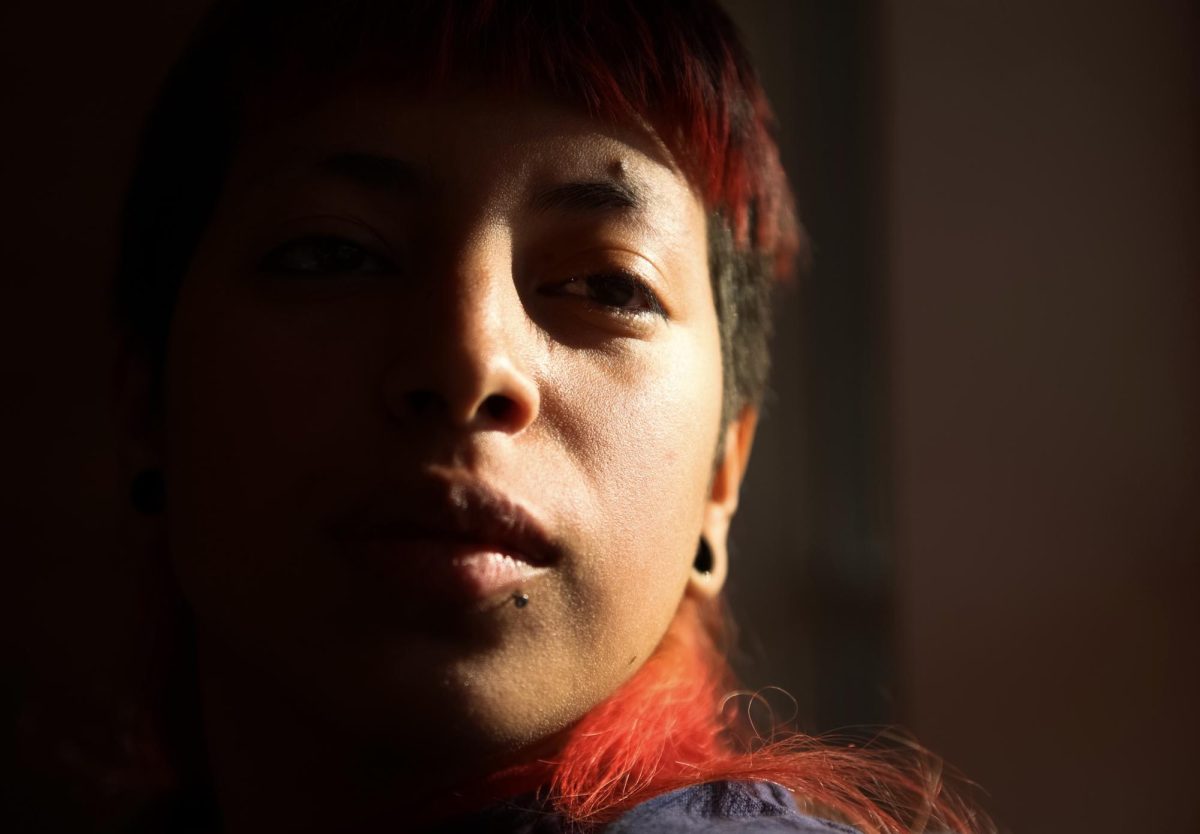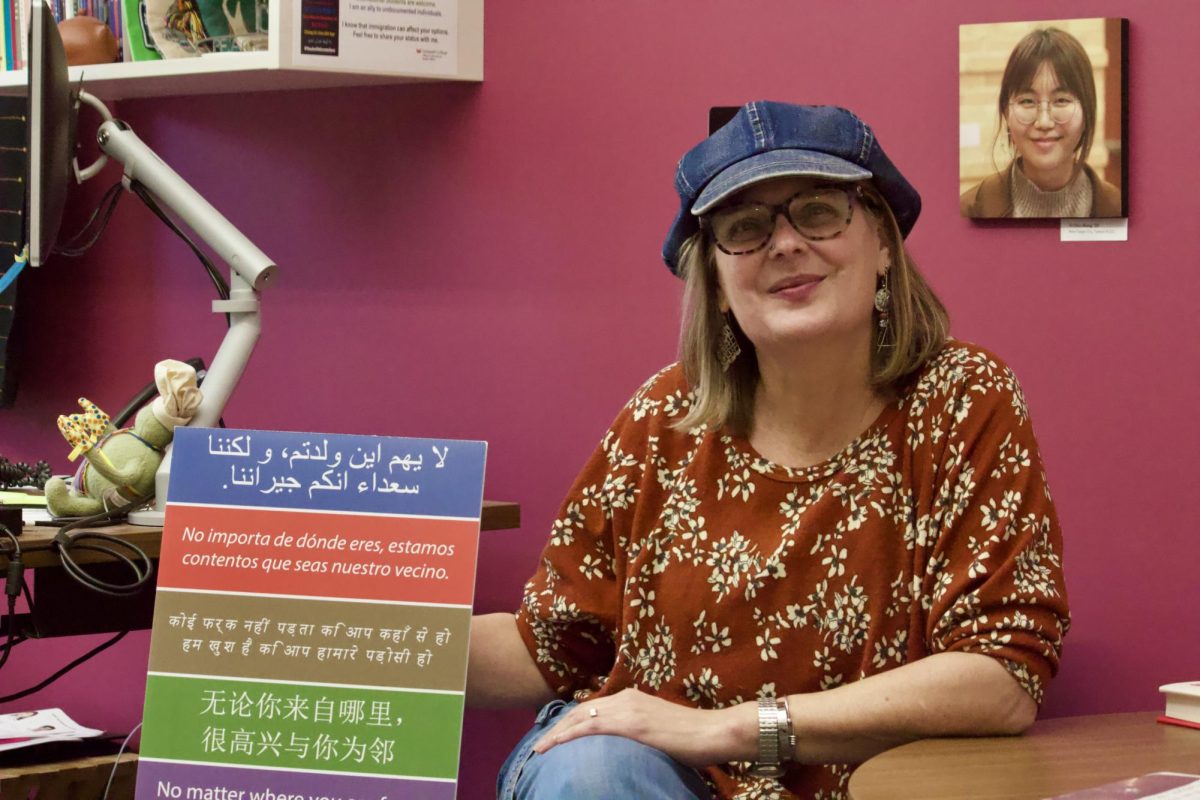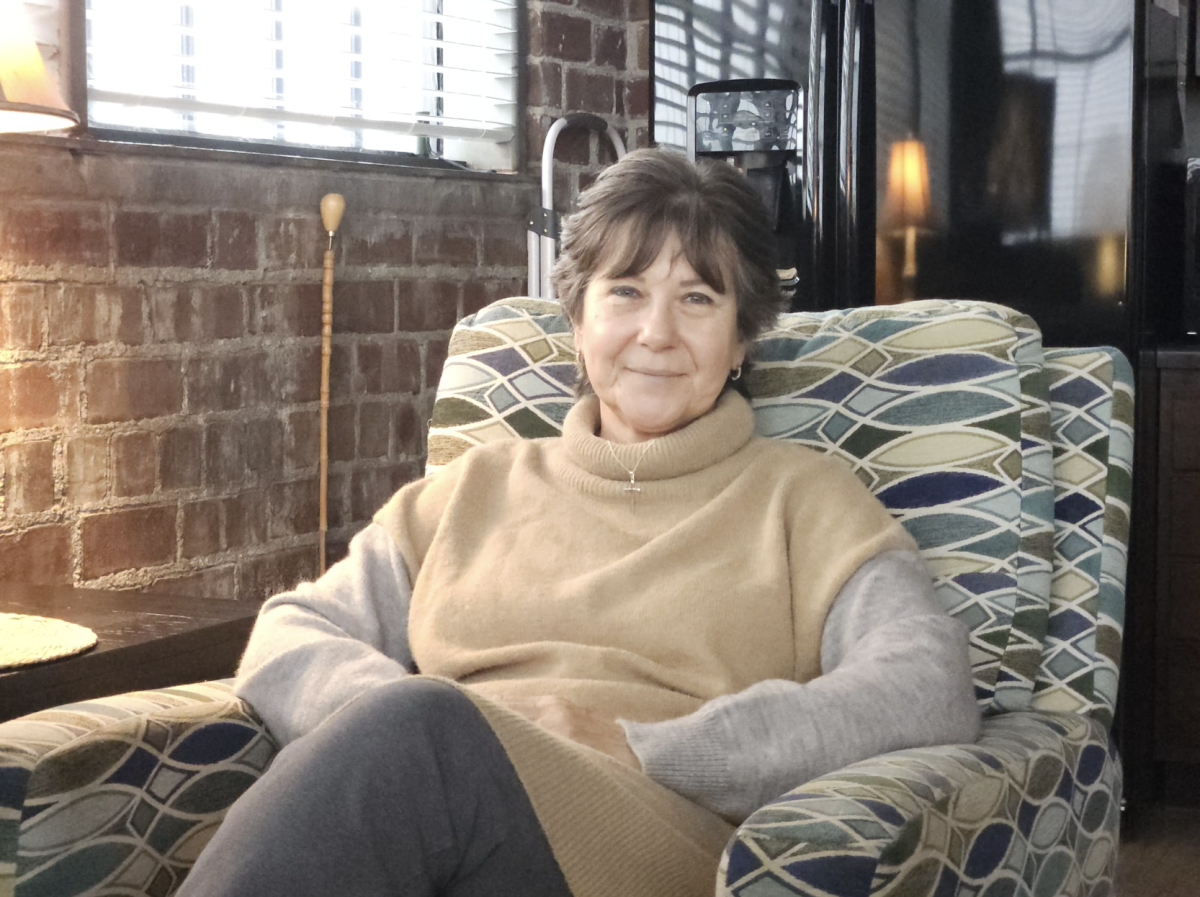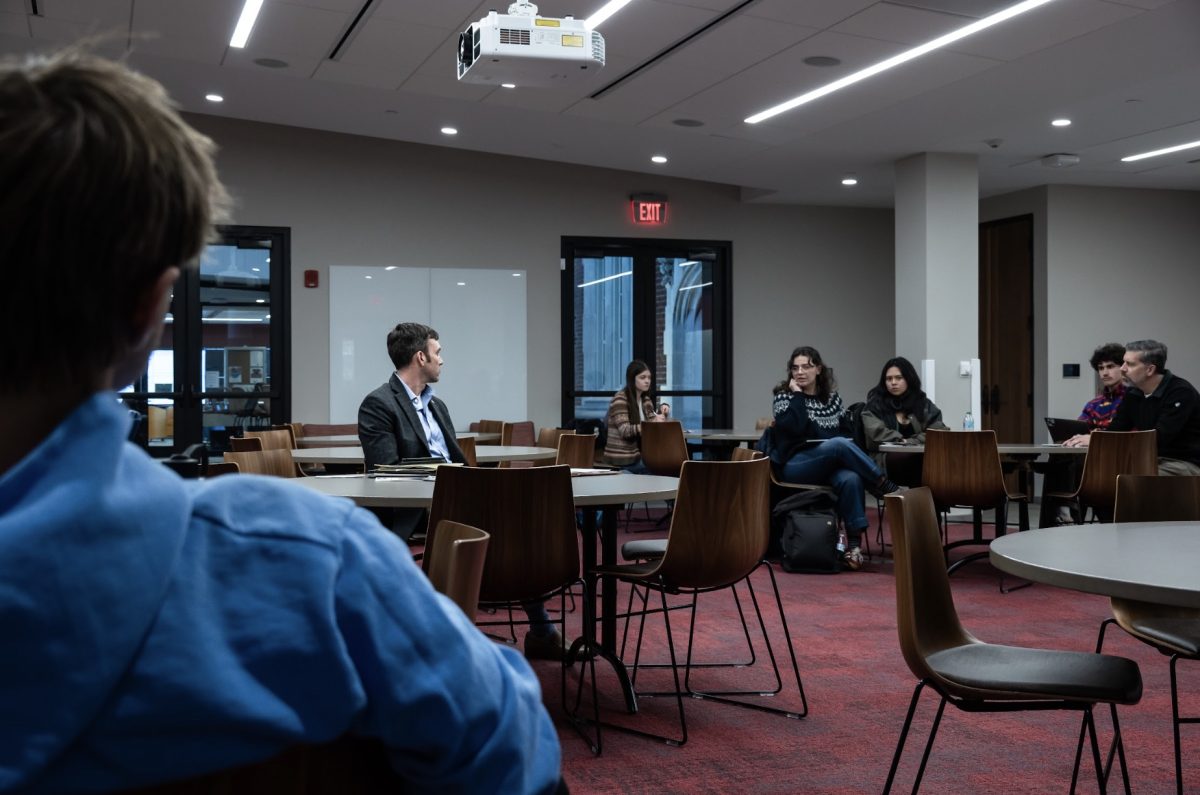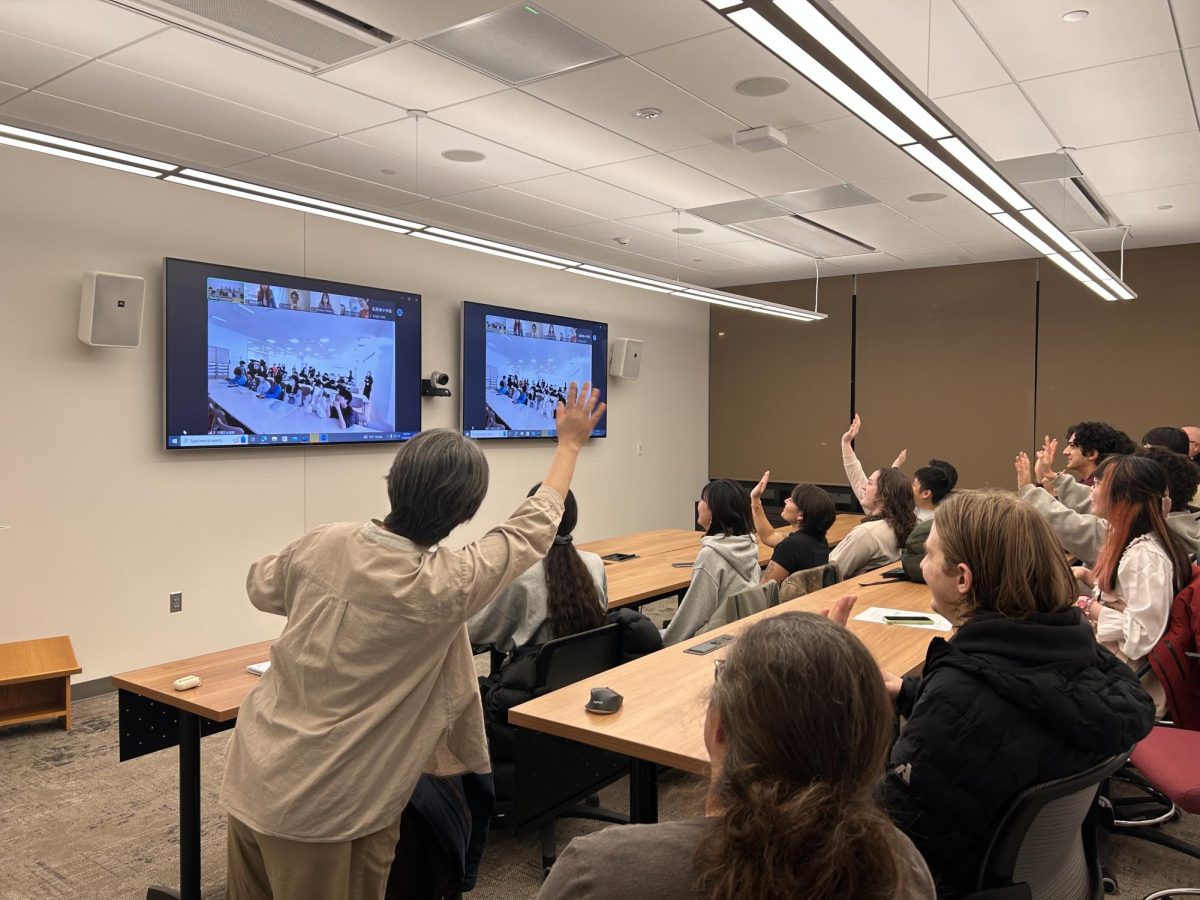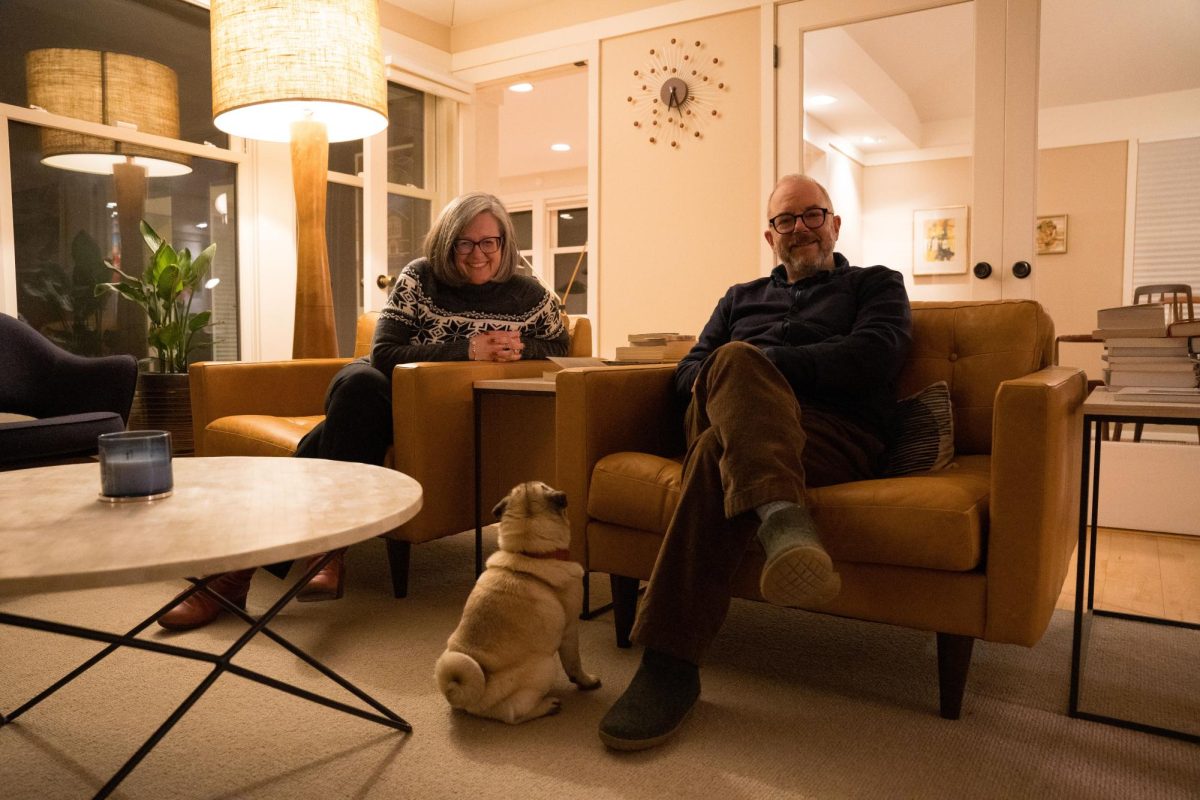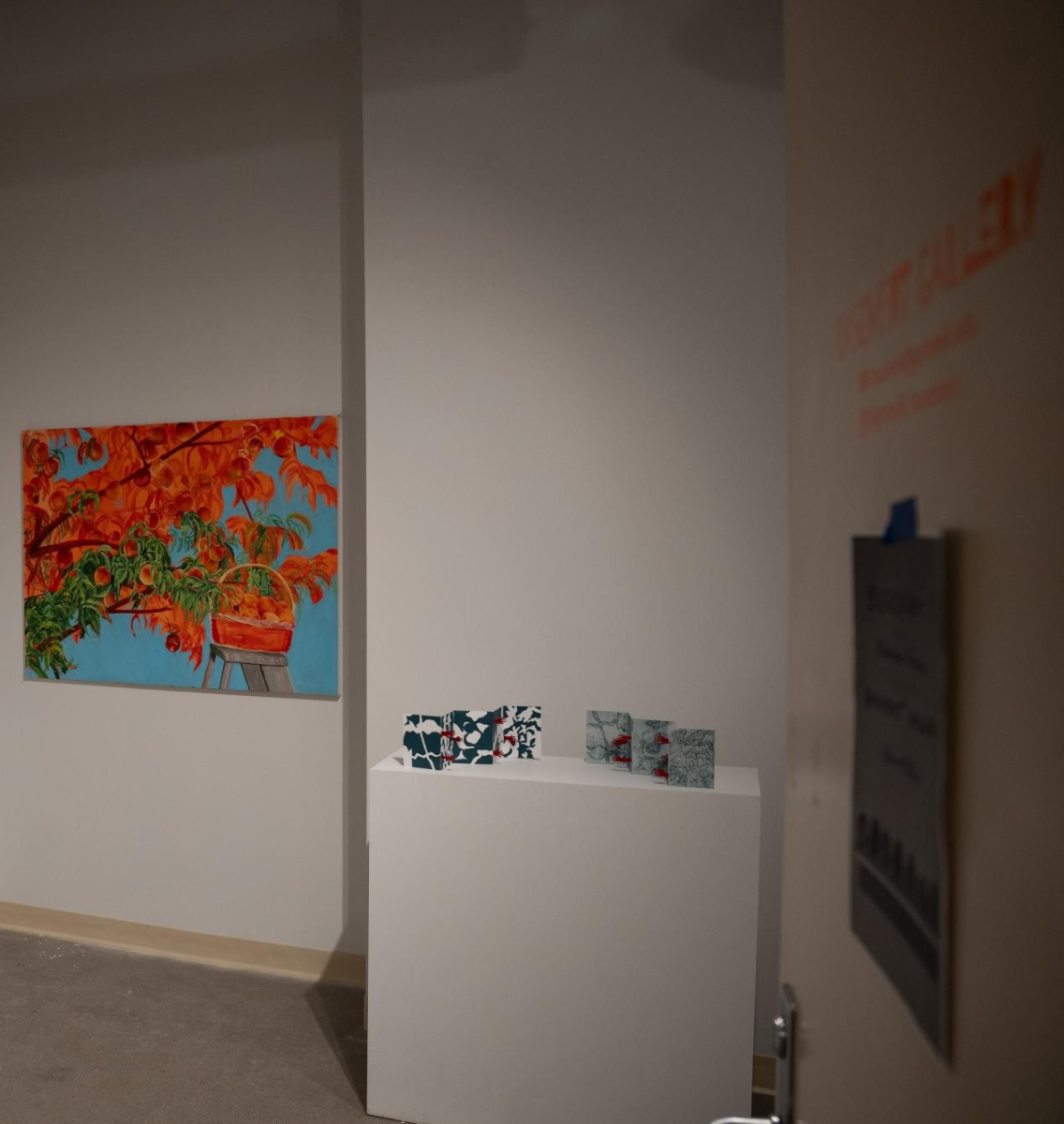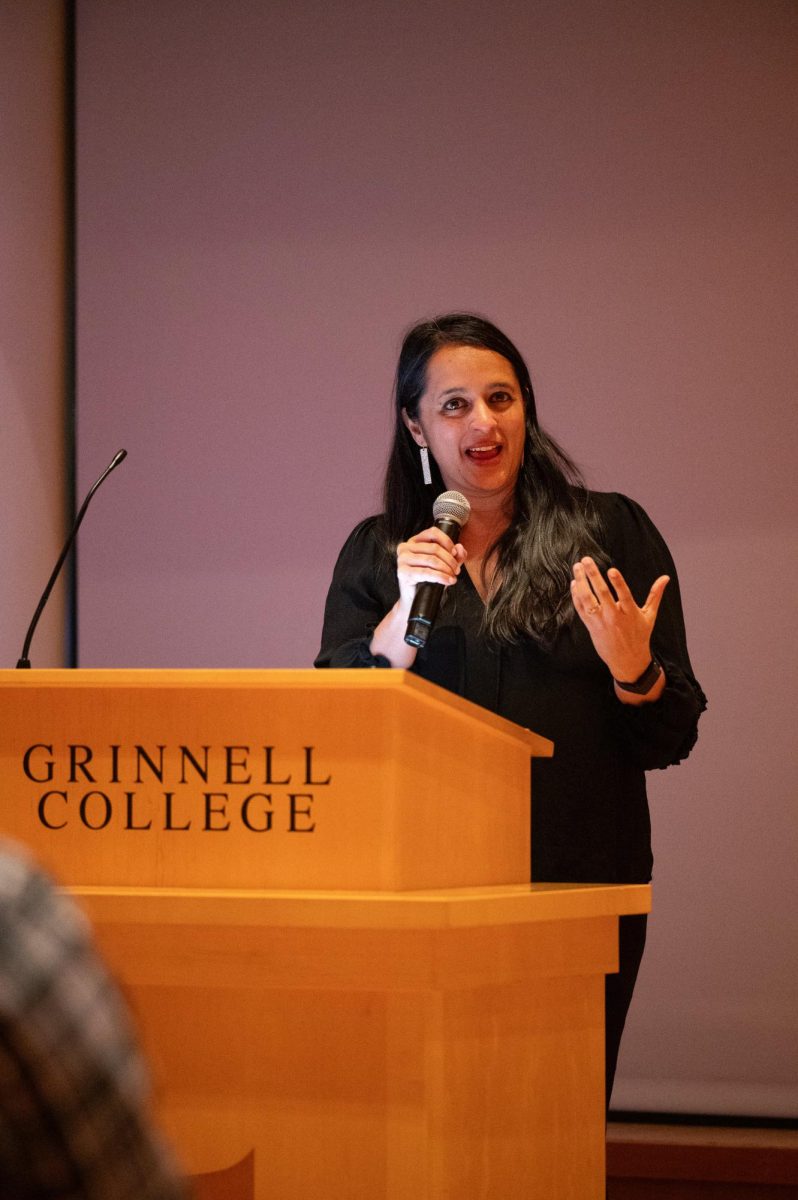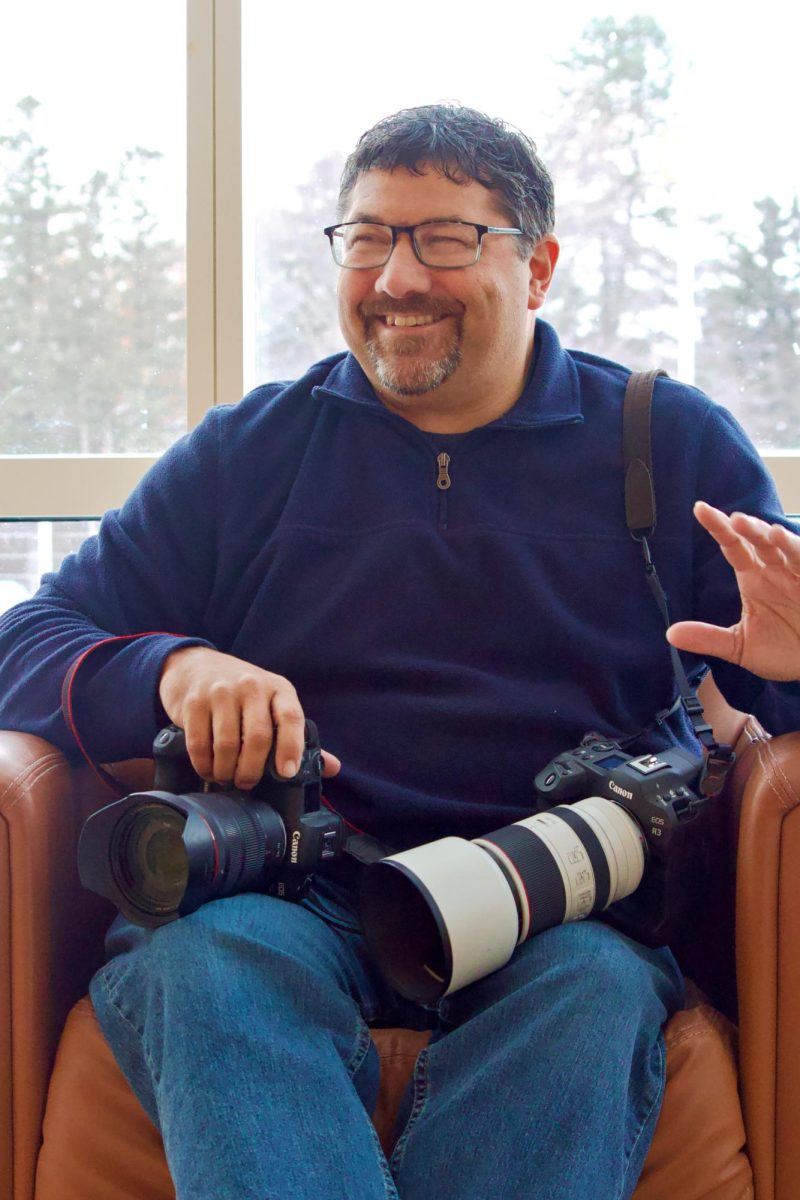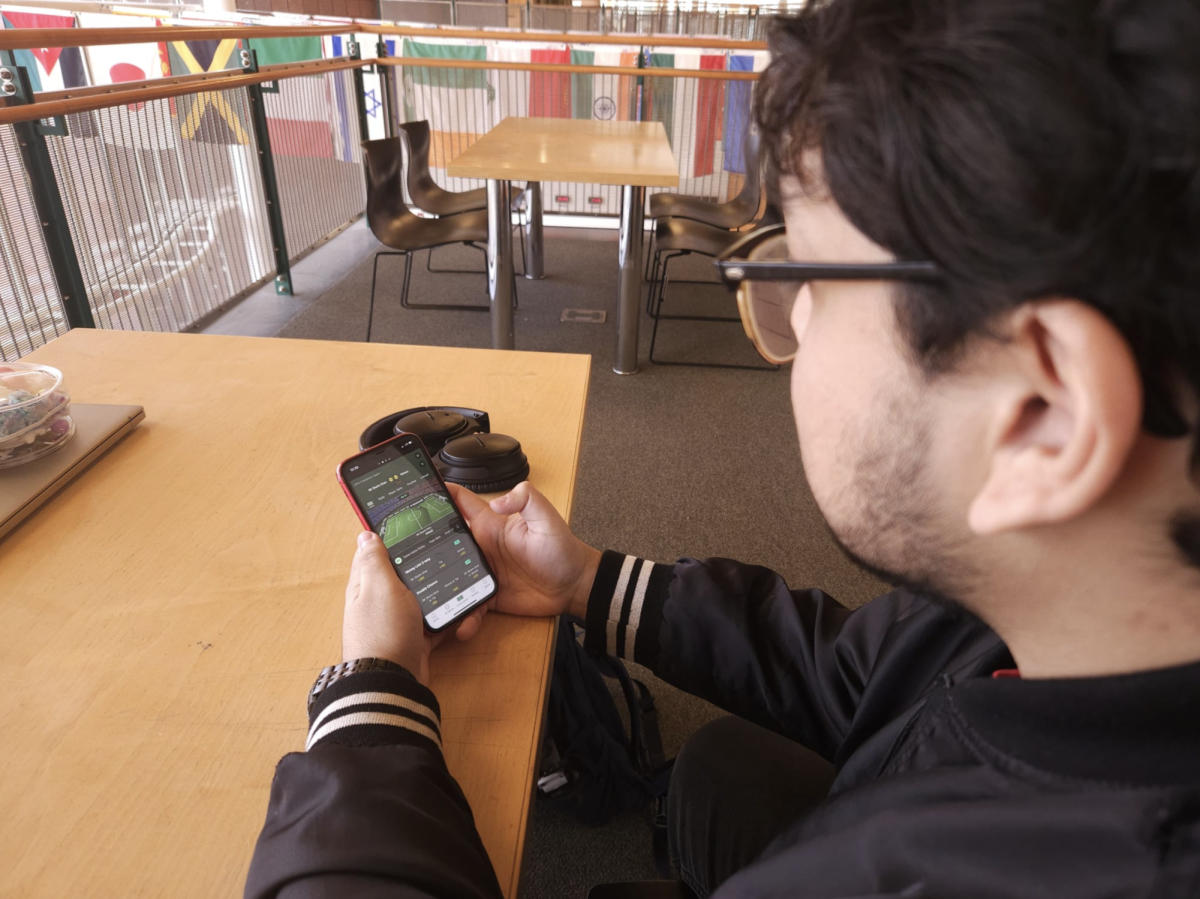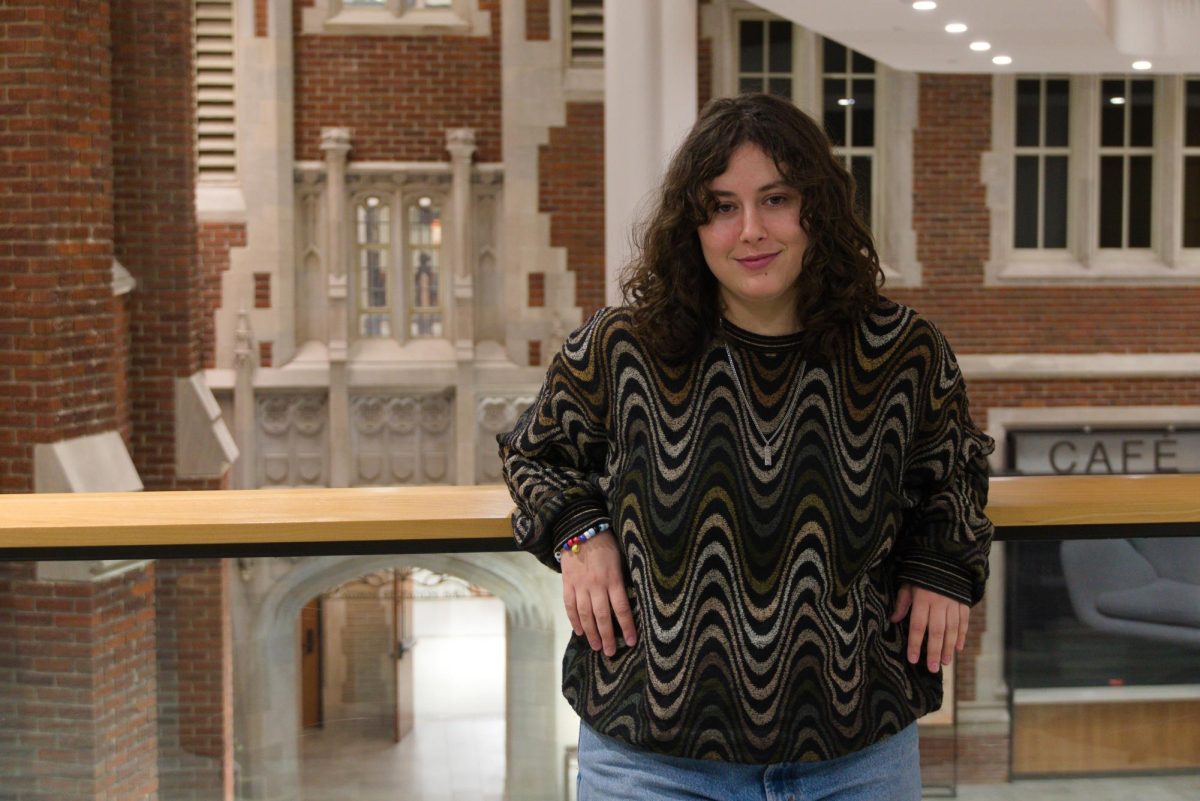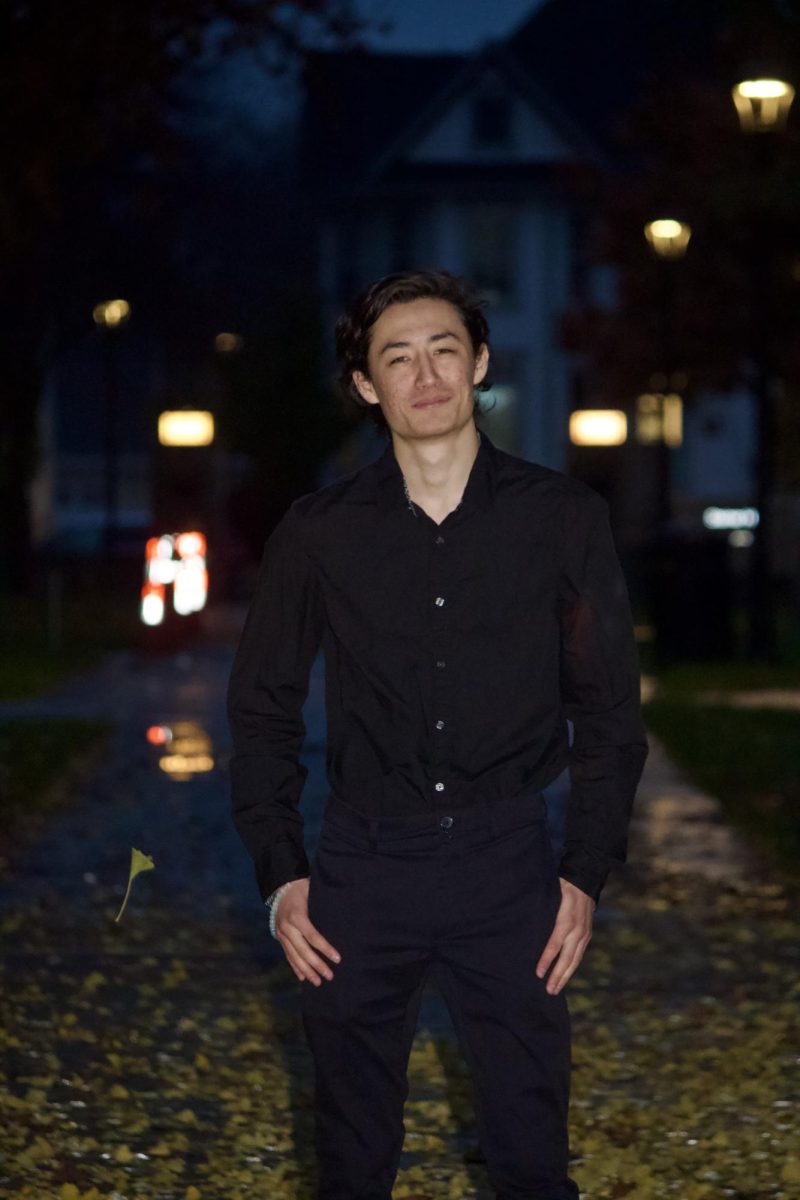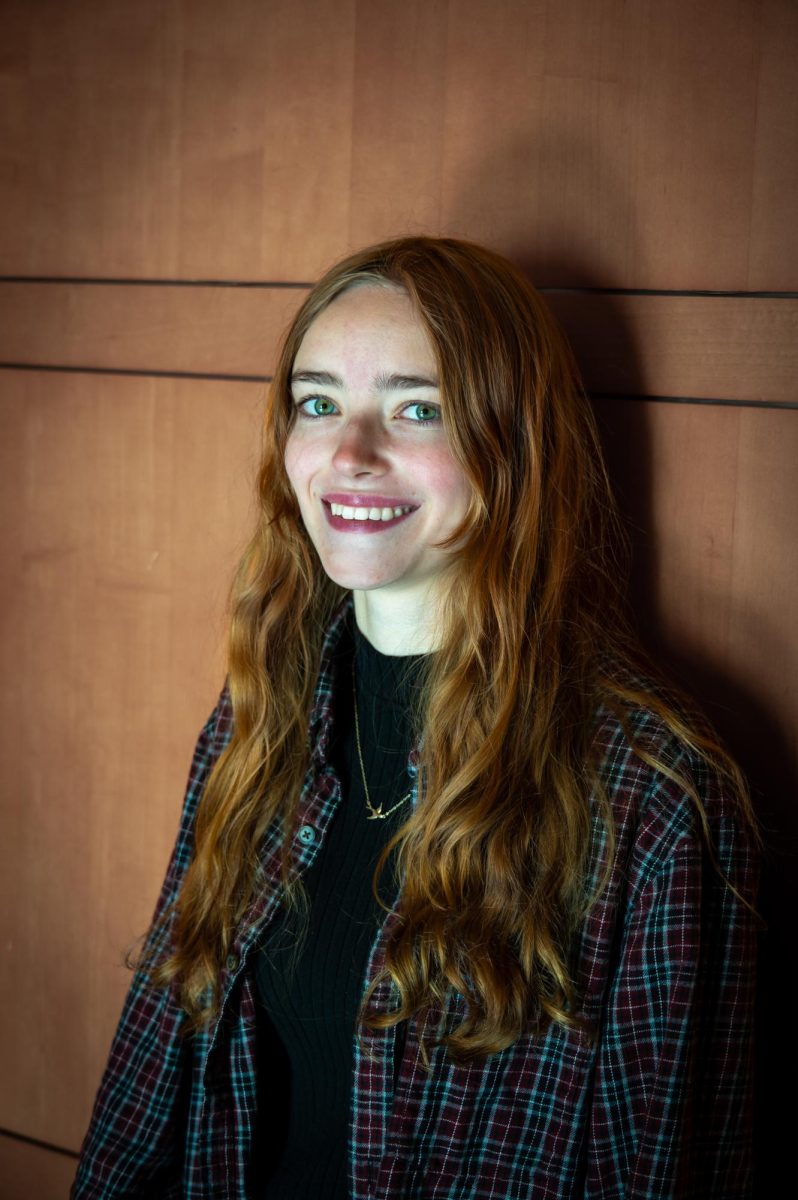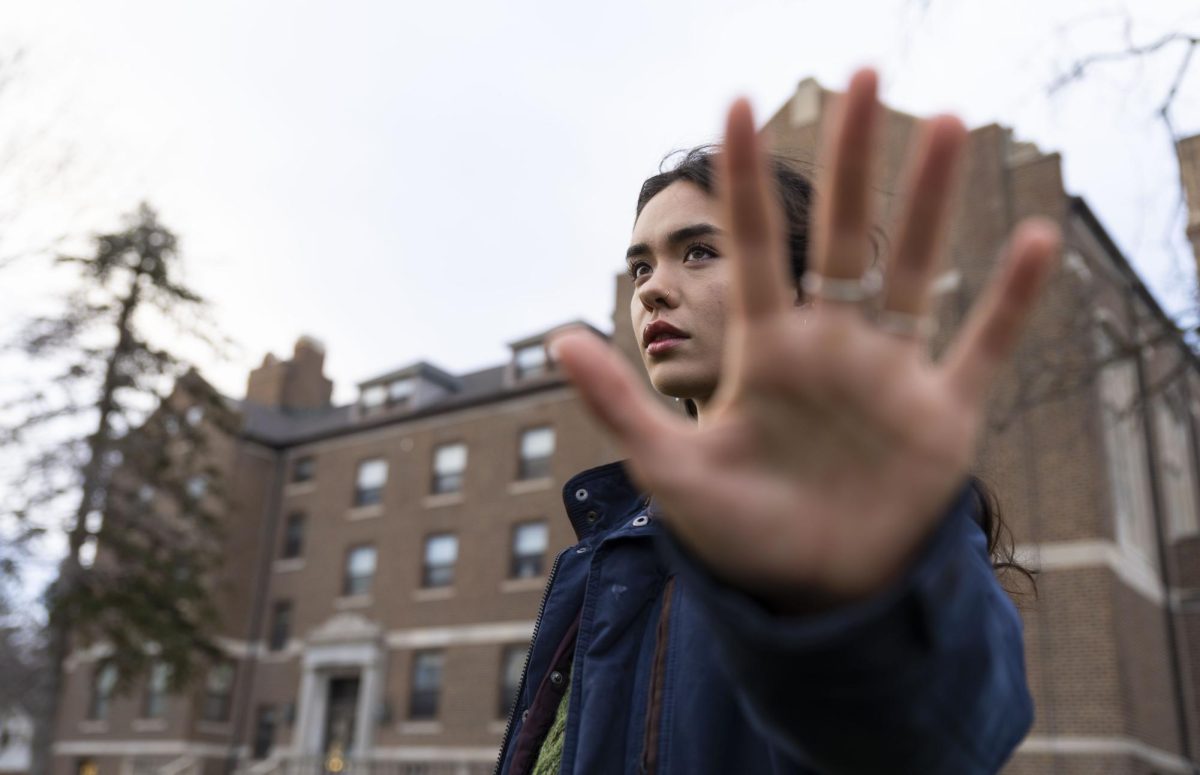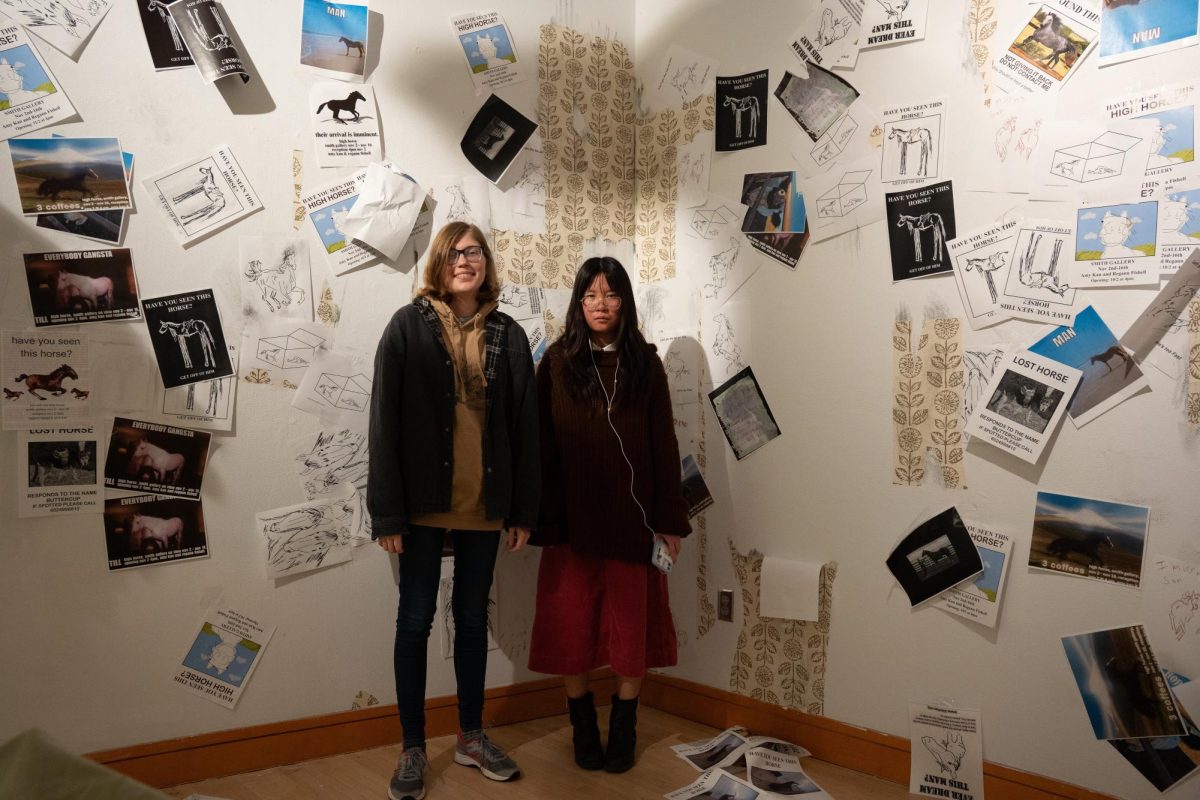This week, Emma Christoph ‘19 opened her first show in the Smith Gallery, “My Own Voyeur.” In this exhibition, Christoph explores the idea of turning an observation inward, specifically through the lenses of behavior tracking and therapy.
The show contains works in a range of media amalgamated from Christoph’s time at the College. The walls of the Smith display a large-scale figure drawing of Christoph seen through a peep hole, therapy cards dangling across the wall, a medicine cabinet stocked with empty pill bottles from the last two years, video projections of Christoph, a television display and a series of peep hole photos she took of herself. Though the work is widely varied, the clear emotional and spatial connection between pieces brings harmony to the show.
While interacting with this idea, at first Christoph was thinking outside of the sexual concept of voyeurism.
“I was thinking about it in a sense of looking back on yourself and tracking your behavior, which is something that I think is really prevalent in therapies,” said Christoph. “I’ve done dialectical behavioral therapy, and there are these things called behavior diary cards, and you track your behaviors and a bunch of different stuff. I liked the idea of researching myself, and what watching myself means.”
As the show developed, Christoph thought about the sexual nature of voyeurism. For her, it is more about the perception of illness as sexy and intriguing, particularly in art.
“The sexual side of the voyeurism kind of connected with the fetishization of mental illness. Because, [sexuality is] a way to cope with [mental illness], because you’re like ‘I wouldn’t be so artistic if I didn’t have problems,’ and people look at it and it’s like, ‘depression, anxiety, it’s so beautiful, dramatic, and that kind of stuff.’ So, I think that ended up factoring into it in this sexual ideal of voyeurism,” Christoph said.
Christoph found the ideas of men watching women are inherent to most of society’s perception of voyeurism, and one she wanted to play with as well.
“I don’t want to make this about women and women being watched, but that’s what happens. When you think about voyeurism, you think about men watching women unknowingly, and so what does it mean that you know you’re being watched but you’re doing the watching yourself?”
In putting on a show about watching herself and her behaviors, Christoph invited the world in to watch her as well, to be her voyeur with her. She notes that this is some of her most vulnerable and intimate work.
“Honestly, I just deeply want people to respond, and it makes me feel better that … a lot of people just relate to it, and that makes it feel less scary,” Christoph said. “It’s more vulnerable if someone comes in and they don’t feel anything; if they don’t get anything from it. Then it just seems, if someone doesn’t have a certain kind of experience in it, and it seems so separate from them personally, then I think that might feel more vulnerable to me than someone who feels emotionally opened by it.”
Christoph’s favorite element of the show is the main wall featuring projections of herself performing daily tasks over her medicine cabinet. The piece wasn’t something she had planned before entering the space, but instead came together within it.
“I’ve had the pill bottles, I’ve had the medicine cabinet, I’ve had the little quilts that I’ve made of pill bottles outside and I’ve had the video, but I never thought about putting it all together like that,” Christoph said. “I think that’s the part that I get excited about the most just because it’s something that came specifically from me making the show, as opposed to something I’ve made for the show and then placed in the gallery, it’s something that I’ve created in the gallery, which I like.”
The television in the space features a video Christoph made for her site-specific class last spring. She recorded herself on her bed while projecting images onto mirrors on the other side of the room that reflected over the bed and herself. The effect is a blend of light and color, all with Christoph in the foreground. The piece is an example of Christoph moving away from her previously preferred medium of drawing.
Although the media of her work has expanded, ideas of voyeurism and mental health are two themes that are depicted across Christoph’s work created at Grinnell.
“I think that with most art majors here, it’s like the more seminar classes you take, the more classes you take, you realize there’s a theme that runs through your work, and try to stick to that and throw it all together in a way that makes sense,” Cristoph said.
